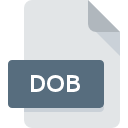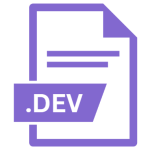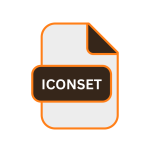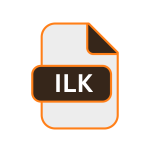.DOB File Extension

Visual Basic UserDocument
| Developer | N/A |
| Popularity | |
| Category | Developer Files |
| Format | .DOB |
| Cross Platform | Update Soon |
What is an DOB file?
.DOB files are primarily associated with Visual Basic UserDocument, a feature within Microsoft’s Visual Basic programming environment.
These files contain user-created documents, typically comprising forms, code modules, and other elements essential for building applications using Visual Basic.
The UserDocument functionality allows developers to design and manipulate user interfaces, define application logic, and integrate various components seamlessly.
More Information.
The introduction of .DOB files coincided with the growing demand for intuitive development tools that catered to both novice and experienced programmers.
Visual Basic’s intuitive drag-and-drop interface, coupled with its robust backend functionality, positioned it as a preferred choice for building Windows applications.
.DOB files served as the backbone of Visual Basic projects, offering a centralized repository for developers to organize their code, forms, and other project elements efficiently.
Origin Of This File.
The genesis of .DOB files traces back to the evolution of Visual Basic, which emerged as a pivotal tool for rapid application development (RAD) in the early 1990s.
As Visual Basic gained prominence among developers, Microsoft introduced the UserDocument feature to enhance the development experience, enabling users to create and manage project-specific documents within the Visual Basic environment.
Consequently, .DOB files became synonymous with Visual Basic projects, encapsulating the essence of user-designed interfaces and application logic.
File Structure Technical Specification.
Understanding the structure and technical specifications of .DOB files are crucial for developers seeking to leverage Visual Basic’s capabilities effectively. Typically, a .DOB file comprises various sections, including:
- Forms: These sections define the user interface elements, such as buttons, textboxes, and labels, arranged using Visual Basic’s form designer.
- Modules: Modules encapsulate code segments written in Visual Basic, facilitating the implementation of application logic and functionality.
- References: .DOB files may include references to external libraries or resources, enabling developers to leverage additional functionalities beyond the core Visual Basic environment.
The file structure of .DOB files adheres to proprietary specifications defined by Microsoft, ensuring compatibility and interoperability within the Visual Basic ecosystem.
How to Convert the File?
Converting .DOB files to alternative formats or newer development frameworks may be necessary to address compatibility issues or leverage modern development paradigms. Several approaches can be adopted for file conversion:
- Manual Conversion: Developers can manually migrate code and design elements from .DOB files to newer development environments, such as Visual Studio or .NET Core, by rewriting code and redesigning forms as per the target framework’s specifications.
- Automated Conversion Tools: Various automated conversion tools and utilities are available that facilitate the conversion of .DOB files to alternative formats or languages. These tools analyze the structure and content of .DOB files and generate equivalent code or project files compatible with modern development environments.
- Third-Party Services: Some third-party software development firms offer conversion services specifically tailored to migrate Visual Basic projects, including .DOB files, to newer technologies. These services may involve manual intervention or a combination of automated tools and human expertise.
Advantages And Disadvantages.
Advantages:
- Ease of Development: Visual Basic’s intuitive interface and comprehensive toolset streamline the development process, making it accessible to developers of all skill levels.
- Rapid Prototyping: .DOB files facilitate rapid prototyping and iterative development, enabling developers to visualize and refine application designs quickly.
- Integration with Microsoft Ecosystem: As a Microsoft product, Visual Basic seamlessly integrates with other Microsoft technologies and platforms, enhancing interoperability and compatibility.
Disadvantages:
- Platform Dependency: Visual Basic applications developed using .DOB files are inherently tied to the Windows platform, limiting cross-platform compatibility.
- Legacy Technology: While still widely used in certain domains, Visual Basic and .DOB files are considered legacy technologies, with newer development frameworks offering more advanced features and capabilities.
- Limited Scalability: Visual Basic may not be suitable for building complex, enterprise-grade applications requiring extensive scalability and performance optimizations.
How to Open DOB?
Open In Windows
- .DOB files can be opened directly in the Visual Basic development environment or any compatible Integrated Development Environment (IDE) supporting Visual Basic projects.
Open In Linux
- Similar to macOS, Linux users can leverage virtualization or emulation solutions like Wine or VirtualBox to run Windows applications and open .DOB files using Visual Basic or compatible IDEs.
Open In MAC
- Developers can utilize virtualization software like Parallels Desktop or VMware Fusion to run Windows within a macOS environment, enabling them to open .DOB files using Visual Basic or other compatible tools.













